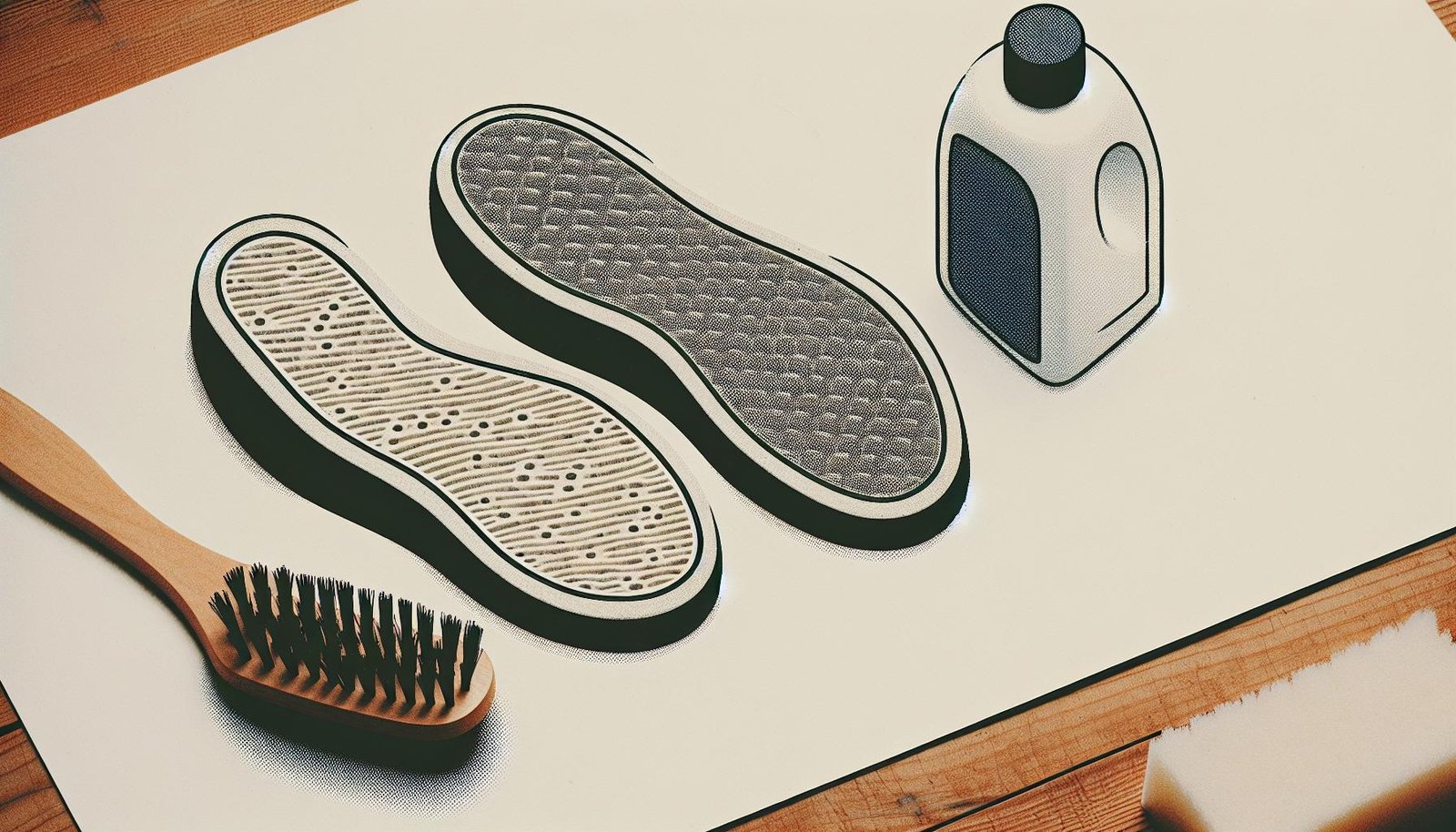How to Clean Shoe Insoles: Simple Methods for Fresh and Odor-Free Shoes
We all know the frustration of slipping on our favorite pair of shoes only to be greeted by an unpleasant odor. Dirty insoles are often the culprit, and they can accumulate sweat, dirt, and bacteria over time. Regularly cleaning our insoles not only keeps our shoes smelling fresh but also extends their lifespan.
Key Takeaways
- Identify Insole Types: Recognizing whether your insoles are foam, gel, leather, cotton, or cork, and whether they are removable or non-removable, is crucial for effective cleaning and maintenance.
- Proper Cleaning Methods: Use appropriate techniques like soap and water, vinegar solutions, or baking soda to ensure insoles are clean, odor-free, and hygienic.
- Effective Drying: Allow insoles to air dry in well-ventilated areas away from direct sunlight and heat sources. For quick drying, use a hairdryer on a cool setting.
- Regular Maintenance: Regularly clean insoles, rotate pairs to reduce wear, store in dry places, and use deodorizers to maintain freshness and extend their lifespan.
- Timely Replacement: Replace insoles when you notice visible wear and tear, persistent odors, reduced comfort, or poor fit to maintain foot health and shoe comfort.
Understanding Shoe Insole Varieties
Insoles come in various materials, each offering unique benefits. Foam insoles, often made from polyurethane or memory foam, provide cushioning and comfort. Gel insoles absorb shock, ideal for high-impact activities. Leather insoles, offering breathability and durability, are common in dress shoes. Cotton insoles are soft and breathable but might wear out faster. Cork insoles, known for their natural shock-absorbing properties, mold to the foot’s shape over time. The material affects the insole’s cleaning method, so it’s crucial to know what type you’re dealing with.
Removable vs. Non-Removable Insoles
Removable insoles offer flexibility and ease of cleaning. You can take them out, clean thoroughly, and ensure they dry completely before placing them back. Non-removable insoles, often glued or sewn into the shoe, pose a cleaning challenge since they can’t be detached. For these, focus on surface cleaning using mild solutions and ensuring they dry properly without damaging the shoe. Both types of insoles need regular maintenance to keep shoes fresh and extend their lifespan.
Preparing Insoles for Cleaning
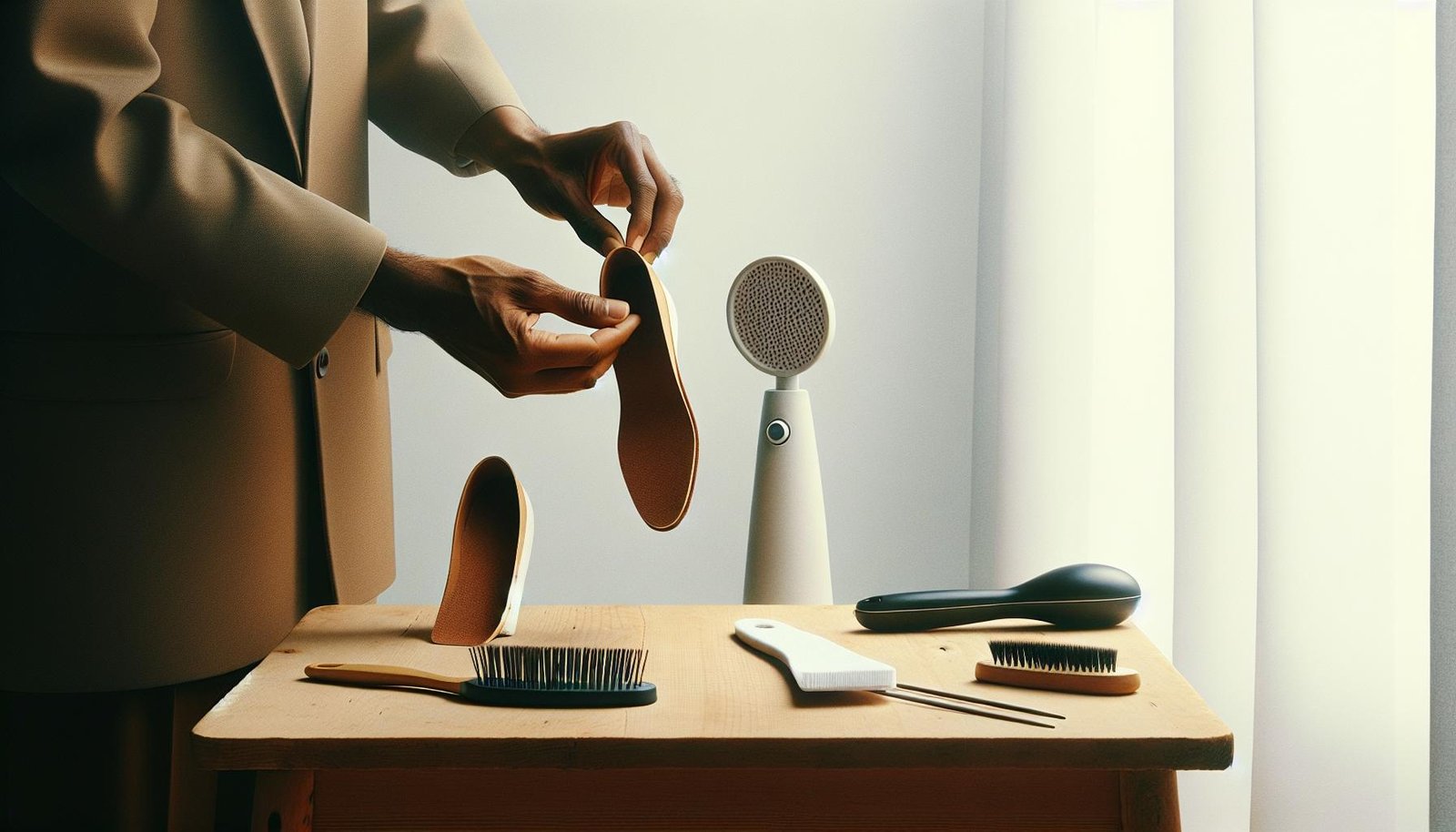
Removing Insoles from Shoes
Removing insoles is the first step in the cleaning process. For shoes with removable insoles, this task is straightforward. If the insoles are removable, simply peel and lift them out starting from the heel and working up to the toe. Some shoes come with glued-on insoles, which require extra care to remove without damaging the shoe. In such cases, unlace the shoes to expose as much of the insole as possible. Use a hairdryer set to High to blow hot air across the insoles for a few minutes. This will soften the glue, allowing you to slowly peel and lift the insoles, starting from the heel.
Initial Inspection and Debris Removal
Once the insoles are removed, inspect them for any significant wear and tear. Look for areas that might need extra attention, such as spots with more dirt or discoloration. Over a trash can, use a brush, either hard or soft-bristled, to remove any surface dirt or grime. Scrubbing the insoles before soaking ensures that you’re not working against ingrained dirt and makes the subsequent cleaning steps more effective. Ensure to focus on areas where the heels and toes rest, as these typically accumulate the most grime.
Cleaning Techniques for Shoe Insoles
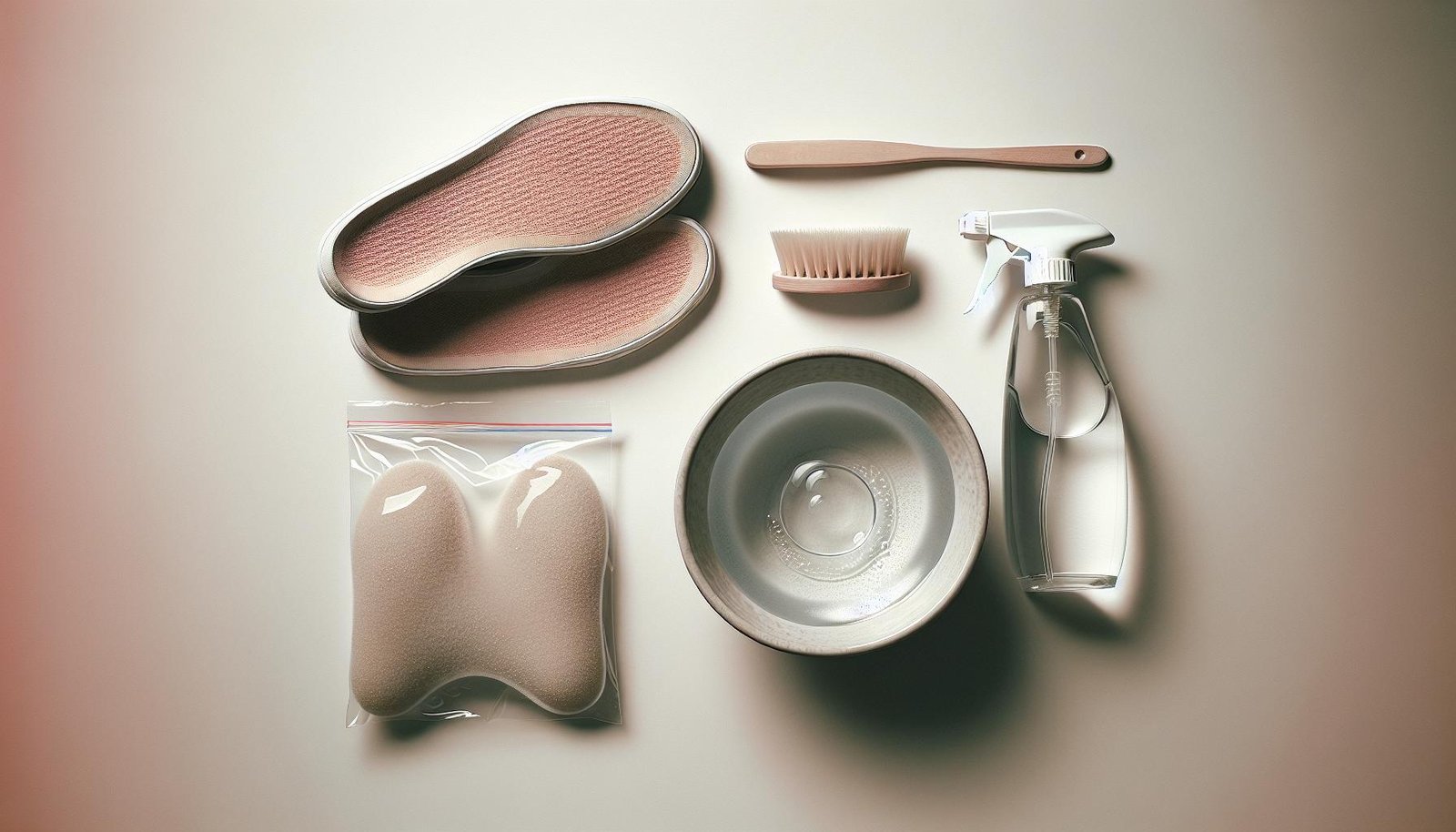
Using Soap and Water
Warm water and mild soap create an effective solution for cleaning insoles. First, remove the insoles from your shoes. Mix warm water and a small amount of mild soap or detergent in a bowl. Use a soft-bristled brush, like a nylon brush, to scrub each insole gently. Pay extra attention to the toe and heel areas, where dirt and bacteria tend to accumulate. After scrubbing, use a clean, damp cloth to wipe away soap residue, and then pat the insoles dry with another cloth. Ensure that the insoles air dry overnight in a well-ventilated area, avoiding direct sunlight.
Using Vinegar Solutions
White vinegar kills bacteria and fungi that cause odors in shoe insoles. Mix a 50/50 solution of white distilled vinegar and water. Avoid other types of vinegar as they may be less effective. Spray or rub this solution onto the insoles, ensuring thorough coverage. Let the solution sit for a few minutes to penetrate and disinfect. Wipe the insoles with a clean cloth to remove excess liquid and let them air dry completely before reinserting them into your shoes.
Implementing Baking Soda for Odor Control
Baking soda neutralizes odors and kills bacteria in shoe insoles. Place your insoles in a plastic bag filled with baking soda, ensuring the insoles are fully covered. Leave the bag overnight to allow the baking soda to work its magic. The next morning, remove the insoles from the bag and shake off any excess baking soda. Use a cloth to wipe away any remaining residue. This method effectively keeps insoles fresh and odor-free.
Each of these techniques ensures your shoe insoles remain clean and hygienic, extending their lifespan and maintaining comfort.
Drying and Maintaining Your Insoles

Effective Drying Techniques
Effective drying is crucial for maintaining the longevity and hygiene of your insoles. After cleaning, we recommend letting your insoles air dry overnight. Place them in a well-ventilated area away from direct sunlight and heat sources to prevent material damage. Using a fan can accelerate the drying process while ensuring gentle airflow.
If you’re in a hurry, you can use a hairdryer on a cool setting to speed up the drying. Hold the hairdryer at least six inches away from the insoles to avoid any potential harm from excessive heat.
Tips for Maintaining Insole Integrity
Maintaining insole integrity requires regular care and attention. Here are some tips to help keep your insoles in top condition:
- Alternate Pairs: Rotate your shoes and insoles to avoid excessive wear on one pair. This also gives your insoles more time to air out between uses.
- Regular Cleaning: Clean your insoles every few weeks using the methods we’ve discussed. Frequent cleaning helps prevent odor buildup and bacteria growth.
- Proper Storage: When not in use, store your insoles in a dry, cool place. Avoid leaving them in damp or hot environments, which can cause material degradation.
- Use Deodorizers: Place dryer sheets or shoe deodorizers in your shoes when you’re not wearing them. These can help maintain a fresh scent and absorb any lingering moisture.
- Inspect for Wear and Tear: Regularly inspect your insoles for signs of wear, such as thinning material or loss of support. Replace them as needed to ensure optimal comfort and performance.
By following these techniques and tips, we can ensure our insoles remain effective and comfortable, prolonging their usability and maintaining overall foot health.
Replacing Your Insoles
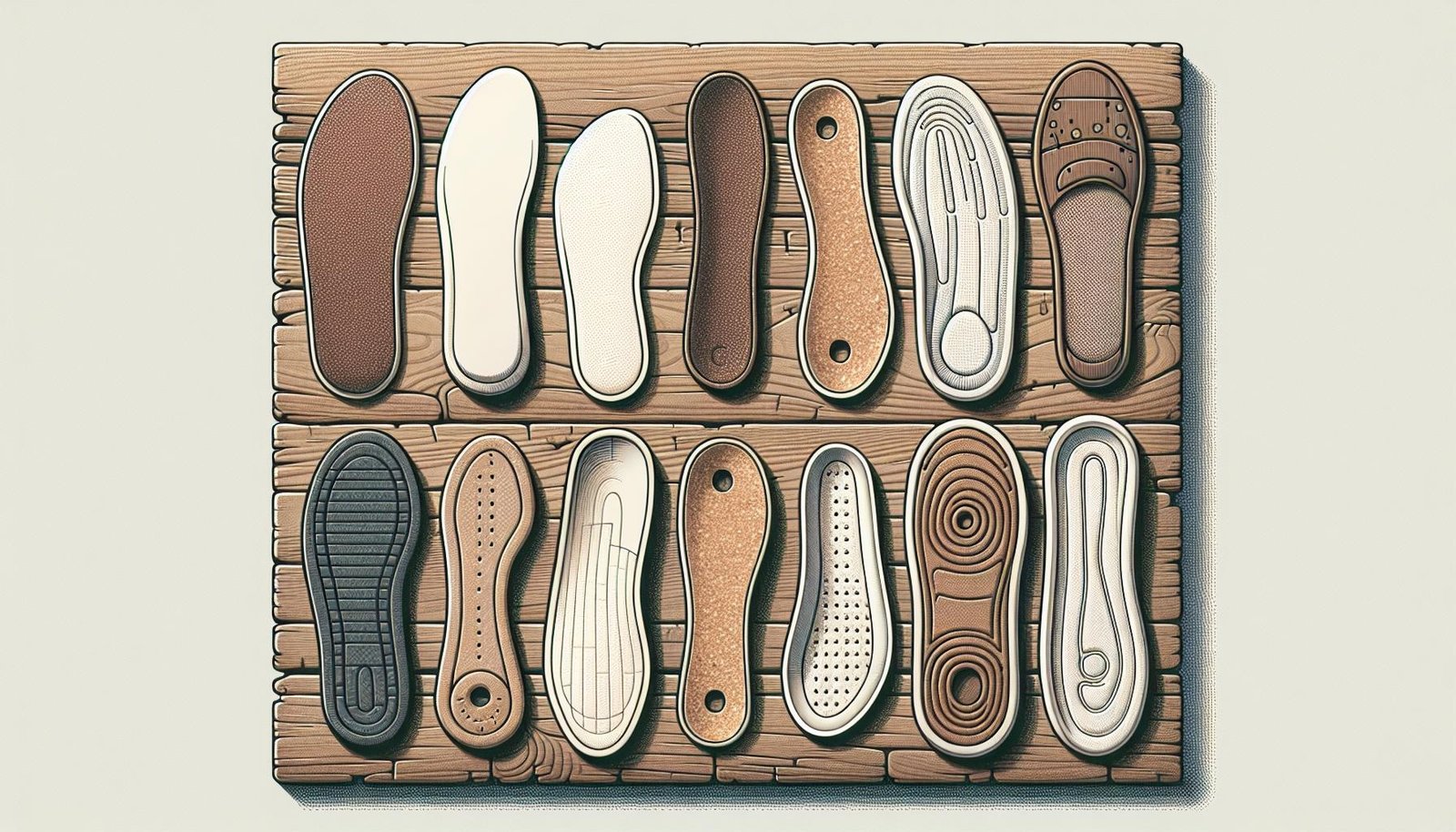
Signs It’s Time for Replacement
Over time, insoles wear out and lose their effectiveness. Several signs indicate it’s time to replace your insoles:
- Visible Wear and Tear: Cracks, holes, or flattened areas suggest that the insoles no longer provide adequate support.
- Persistent Odor: If baking soda, vinegar, or other cleaning methods don’t remove odors, it’s a sign of deep bacterial growth.
- Reduced Comfort: Discomfort, pain, or loss of cushioning means the insoles aren’t providing the necessary support.
- Poor Fit: Curling edges, shrinking, or changes in shape can affect the fit of your shoes, leading to discomfort.
Choosing the Right Insoles for Your Needs
Selecting new insoles involves considering several factors to ensure you’ve got the right fit and support.
- Material: Insoles come in foam, gel, leather, cotton, and cork, each offering unique benefits. Foam and gel insoles provide excellent cushioning, while leather and cork offer durability.
- Arch Support: Choose insoles that match your arch type—high, medium, or low. Proper arch support can prevent foot pain and other issues.
- Activity Level: Those who engage in high-impact activities, like running, need insoles with extra cushioning and support.
- Specific Conditions: If you have specific foot conditions, such as plantar fasciitis, look for insoles designed to address these issues.
- Shoe Type: Ensure that the insoles fit well within the type of shoe you intend to use them in, whether athletic shoes, dress shoes, or casual sneakers.
Replacing insoles periodically ensures comfort, prolongs shoe lifespan, and promotes overall foot health.
Prevention Tips for Insole Care
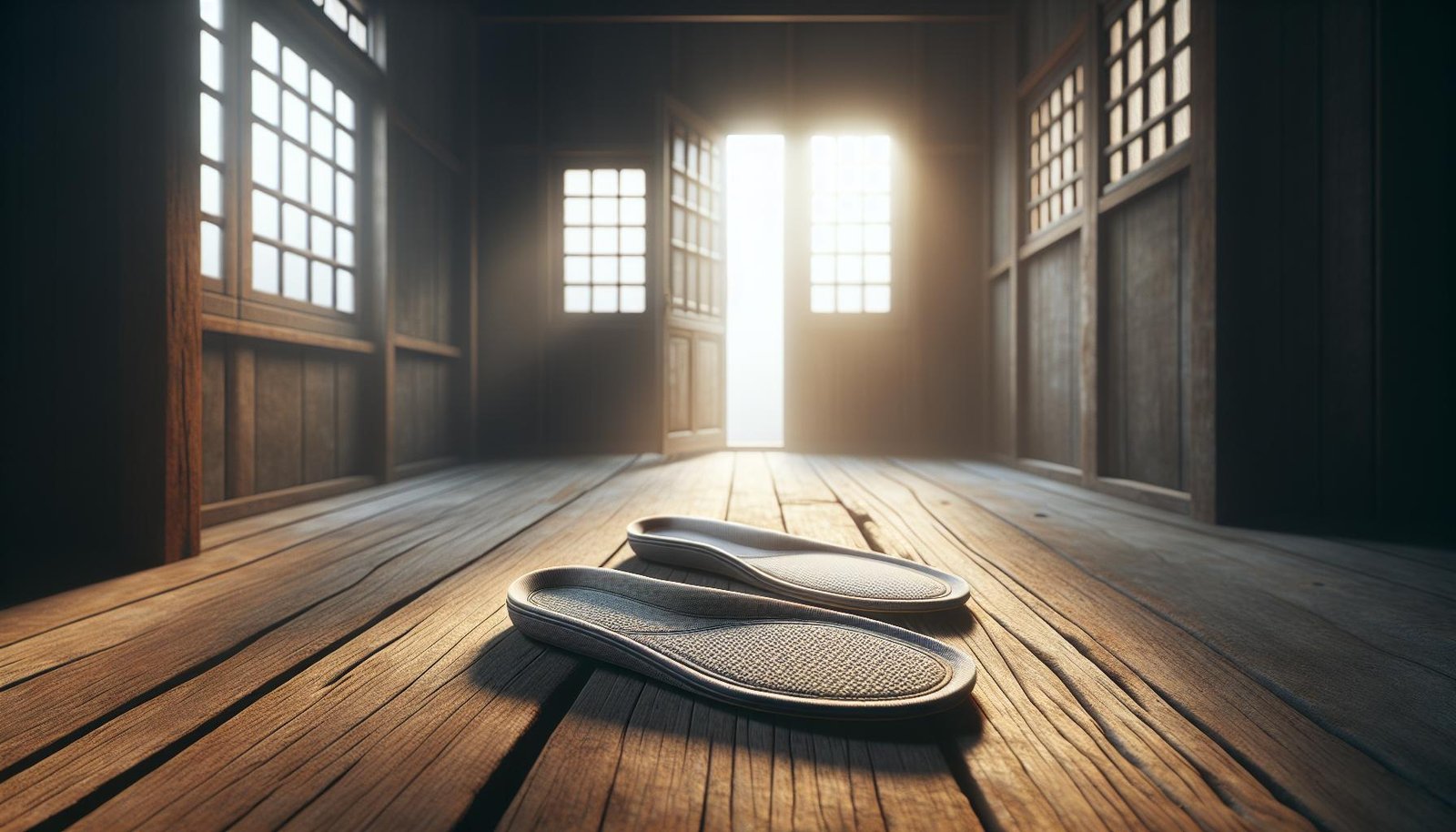
Regular Air-Out Practices
Air-out shoe insoles regularly to reduce moisture build-up and prevent odors. After wearing shoes for a day, remove the insoles and place them in a well-ventilated area. Air-drying them overnight helps in evaporating any accumulated sweat, keeping them fresh for the next use. Ensuring insoles dry completely before placing them back in shoes is crucial to avoid mold and bacteria growth.
Rotation Recommendations
Rotate shoe pairs to extend the lifespan of insoles and minimize wear and tear. Wearing the same pair daily increases moisture and dirt build-up, leading to faster degradation. By rotating between at least two pairs of shoes, one can recover while the other is in use. This practice not only gives insoles time to air out but also helps maintain optimal comfort and hygiene.
Keeping our shoe insoles clean is essential for maintaining comfort and hygiene. By understanding the different types of insoles and the appropriate cleaning methods for each we can effectively combat odors and extend the lifespan of our shoes. Regular care practices like airing out and rotating our shoes play a crucial role in preventing moisture build-up and ensuring our feet stay healthy. Choosing the right insoles tailored to our needs not only enhances comfort but also promotes overall foot health. Let’s make insole care a part of our routine to enjoy fresher and longer-lasting footwear.
Frequently Asked Questions
Can you wash the insoles of your shoes?
Hand washing is recommended for shoe insoles. Use mild dish soap or laundry detergent to gently clean removable insoles and avoid machine washing, which may damage them.
Is it OK to wash shoe insoles?
Yes, use warm water and mild soap. Gently scrub with an old toothbrush or nylon brush without saturating. Remove insoles nightly to air-dry, ensuring each side dries properly, especially for heavy perspiration.
What do you spray on shoes to clean the inside?
Bleach spray diluted with water or rubbing alcohol solution can be used. Apply with a spray bottle to clean the interior of the shoe.
How do you deodorize inside shoes?
Mix ¼ cup each of baking soda and baking powder with ½ cup of cornstarch. Place the mixture in cotton socks or sprinkle inside shoes and leave overnight. Add essential oil drops for extra fragrance.
How to clean Hey Dudes insoles?
Hand wash laces and insoles in warm soapy water. Rinse and set aside to dry. Regular cleaning keeps HEYDUDE shoes looking their best.

